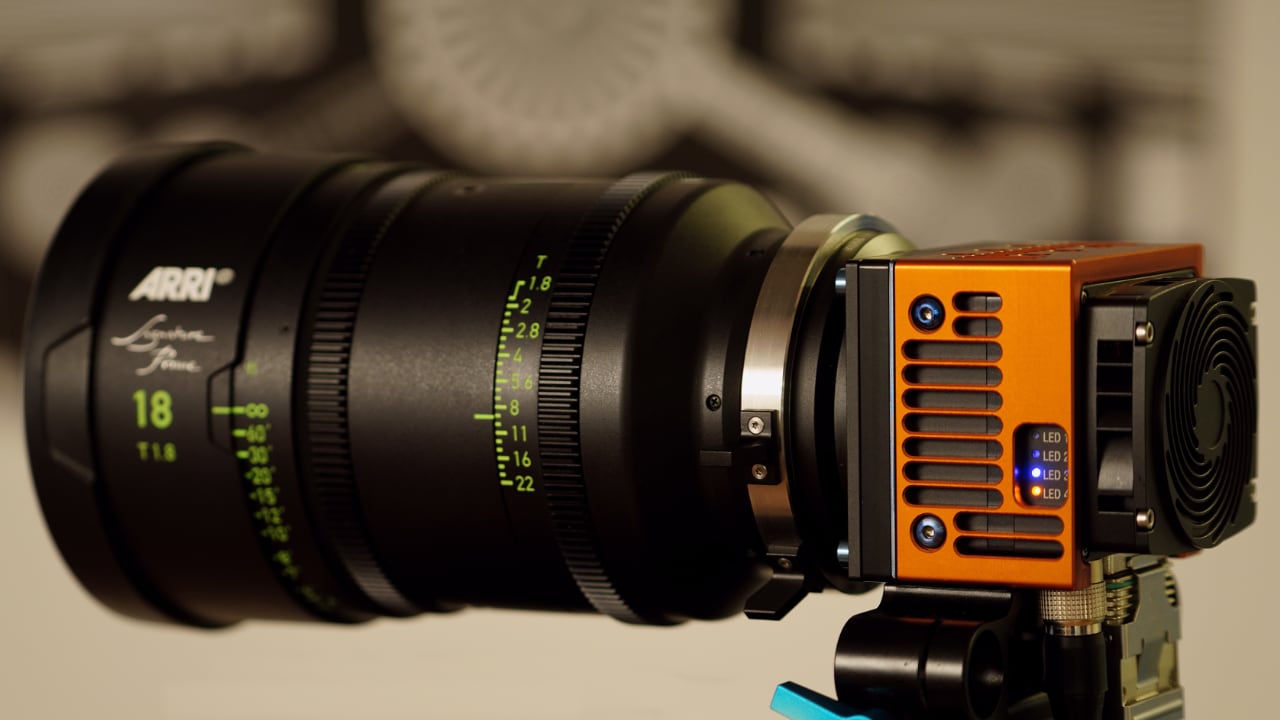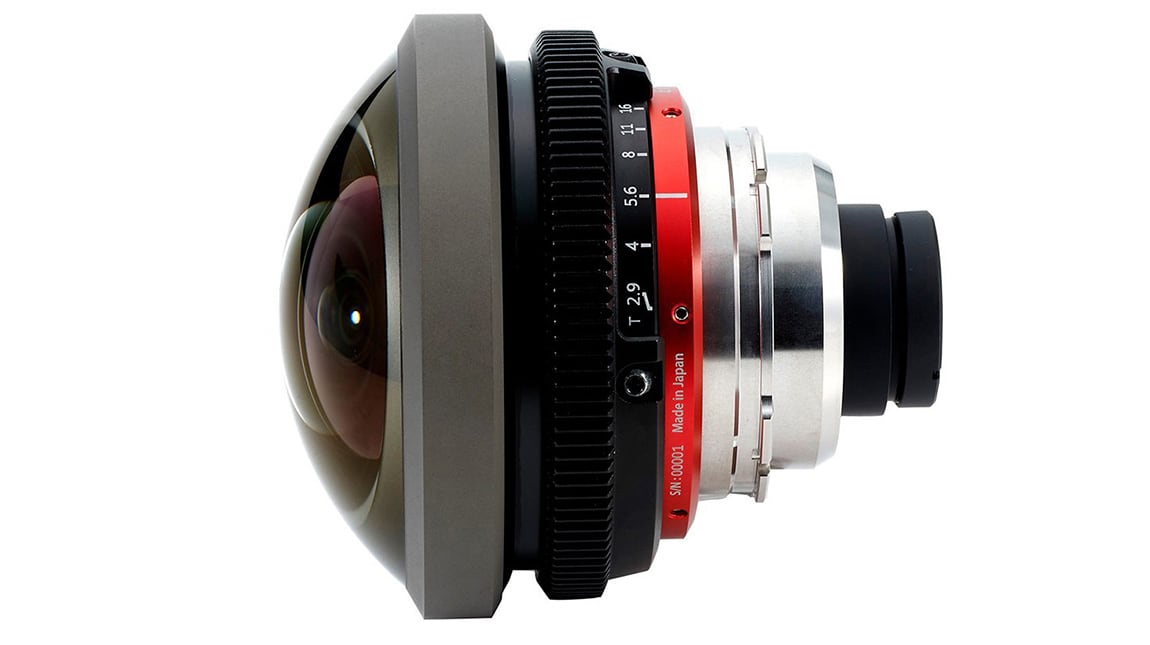
When it comes to taking some of the highest resolution images possible for the likes of VFX plates and immerse cinema, there is probably nothing else quite like the ACHTEL 9×7 Digital Cinema Camera.
If you have not heard of Australia’s ACHTEL, or even its 9x7 Digital Cinema Camera, then you are in pretty good company; most people haven’t. There are plenty of reasons for that too. First it’s a specialist camera that has been designed for VFX plates and immersive cinema (IMAX, Flying Theatre and Giant Screen…that sort of thing). Second, it costs a cool $200,000 at current exchange rates. Third, there are only five of them in existence.
Niche, expensive, and rare; that’s all three boxes in the exclusive category ticked right there.
But, that’s not to say it will stay that way for ever. Developer ACHTEL is currently building another three to target the European rental market and the company will be rocking up at Cine Gear Expo in LA next week to spread the word further, ensuring it gets that little bit better known in the US too.
Naturally it's already been used there. Have a look at aerial footage of downtown LA shot with the 9x7 by XM2 Pursuit last year and you can see the sort of images you can get from it.
It's impressive stuff and the company is an intriguing mixture of the bullish and the modest.
“They are not there to replace Sony, RED or ARRI [cameras] – they are replacing arrays of 6 - 12 of those cameras and comfortably out-resolving IMAX 15-per-70mm film and delivering colour fidelity that is in a class of its own,” says eponymous company boss, Pawel Achtel on the one hand, while also saying: “Our customers usually rent them following word of mouth because, we believe, the proof is always in the pudding.”
The camera uses a 9344x7000 sensor (hence the 9x7 brand name) with what it says is true correlated double sampling to be able to resolve up to 18,688x14,000 (260 Megapixels) resolution. ACHTEL is also the first to say that sensor pixel count is only half the story. So we fired off an email to Pawel to fill in some of the information on what the other half is.
Okay, let’s start off with how this all came about: what’s the history of the 9x7? When did you start working on it and how did the idea first come about?
We started development in 2020 and had an MVP (minimum viable product) within 12 months. The idea was simmering for a couple of years with keen research into some unconventional hardware and software solutions.
What’s it being used for? What do people need that degree of resolution for?
From the beginning it was a camera specifically designed for IMAX and Giant Screen but, ultimately, ended up being popular specialised VFX tool replacing large multi-camera arrays. A single 9x7 camera can comfortably replace 8-camera arrays reducing cost and simplifying capture of high resolution VFX plates. It is also the only commercially available camera meeting deliverables for MSG Sphere.
What sensor is it based around?
It is based around a specialised 65 Megapixel, APS-H size, global shutter sensor that features extremely high levels of contrast at the photosite level – significantly higher than most high-end digital cinema cameras. It is this high contrast that makes it particularly suitable for imaging requiring high levels of sharpness not attainable with traditional high-end digital cinema cameras.
There are a lot of technical issues that you seem to have solved that others haven’t. What’s the secret?
First and foremost, we have solved high bandwidth recording. By “high-bandwidth” I mean beyond 10GB/s of reliable and sustained recording bandwidth. This bandwidth allows us to record linear uncompressed raw with absolutely no compression or any processing. It is like having “fat negative” where every piece of information is captured and nothing is thrown away as a matter of compromise.
We also took a very innovative approach with colour science. It is the only camera that, apart from traditional colour science, also supports Direct Scene-Referred workflow and is able to produce colorimetric images “out of the gate”. So, images do not need to be colour corrected and are consistent across different lighting setups. This workflow has also many other advantages, such as ultra-high gamut (no gamut clipping due to chromatic adaptation) allowing bright and saturated colours that modern digital cinema cameras struggle to reproduce.
Finally, we have invested heavily in workflow software allowing end-to-end colour management, but also raw processing that is produced off-line and therefore offers better image quality than in-camera solutions.
Any side-by-side comparisons?
We did a test a couple of years ago and here is a side-by-side comparison of night time crop. Camera A: BMD 12K; Camera B: 9x7; Camera C: RED Monstro; Camera D: ARRI LF
Please note that since this test we have made very significant improvements with 9x7, notably increased dynamic range by about 2 ~ 3 stops. Raw files have now been removed from the cloud. We have recently done some new, updated tests involving Sony Venice 2, RED Raptor and ARRI S35 but these new test results are still under review and not finalised yet.
What lenses are people tending to use on it?
Rectilinear lenses are pretty much limited to ARRI Signature Primes. There are a few selected Sigma ART Prime lenses that go this far too. Notably there are no zoom lenses that can reach the desired levels of sharpness. ARRI Signature Zooms are the closest, but you can clearly see they are not up to the same levels as can be obtained with Signature Primes.
The most commonly used lens is, however, the Entaniya HAL 220 LF fisheye (below) for capturing VFX plates and Giant Screen. We are also intending to announce a new, exciting lens option at Cine Gear later this year, so stay tuned.

Can we namecheck some projects it’s worked on?
One project I can publicly disclose is Amazon’s Thirteen Lives, DOP’ed by Andrew Rowlands. We have done a number of projects for Warner Brothers, Columbia Pictures and Marvel Studios, which are under NDAs.
How many of the 9x7s have you made to date?
Our company made five cameras, which are available for rental/hire. We are currently building another three additional cameras to serve the European market.
What are the practicalities of using it? I’d imagine a DIT running up with a handful of SD cards isn’t quite going to cut it…
The workflow is pretty straightforward:
RAW footage is recorded onto a recording module with either 4TB or 8TB internal storage. It can be backed up using relatively slow USB 3 connections (up to four concurrent transfers), or using 10Gbit Ethernet. For faster transfers we offer Afterburner directly to U.2 SSD drives using a PCIe interface.
The footage is then transcoded to Cinema DNG, which can be done either on camera itself (pretty fast) or on a DIT workstation (Windows and Linux are supported). There is a high level of scripting flexibility allowing customisation for wide range of workflows and needs.
Where do you go next? What plans do you have for the 9x7 over the next few years?
We are currently working on image creation workflows and planning to offer significant updates to both 9K x 7K as well as 18.7k x 14K workflows resulting in colour-managed EXR deliverables for direct consumption in VFX applications. This is planned for release later this year.
We are continually improving our colour science and associated workflows making them more refined and easier to use. We are also streamlining hardware setups leveraging an ARRI-compatible ecosystem.
Looking forward we are evaluating new sensor technologies promising image quality improvements well beyond and above current state-of-the-art. This is not so much to replace or supersede the 9x7, but to offer capabilities that are somewhat complementary in other ways.
Tags: Production Cameras


Comments